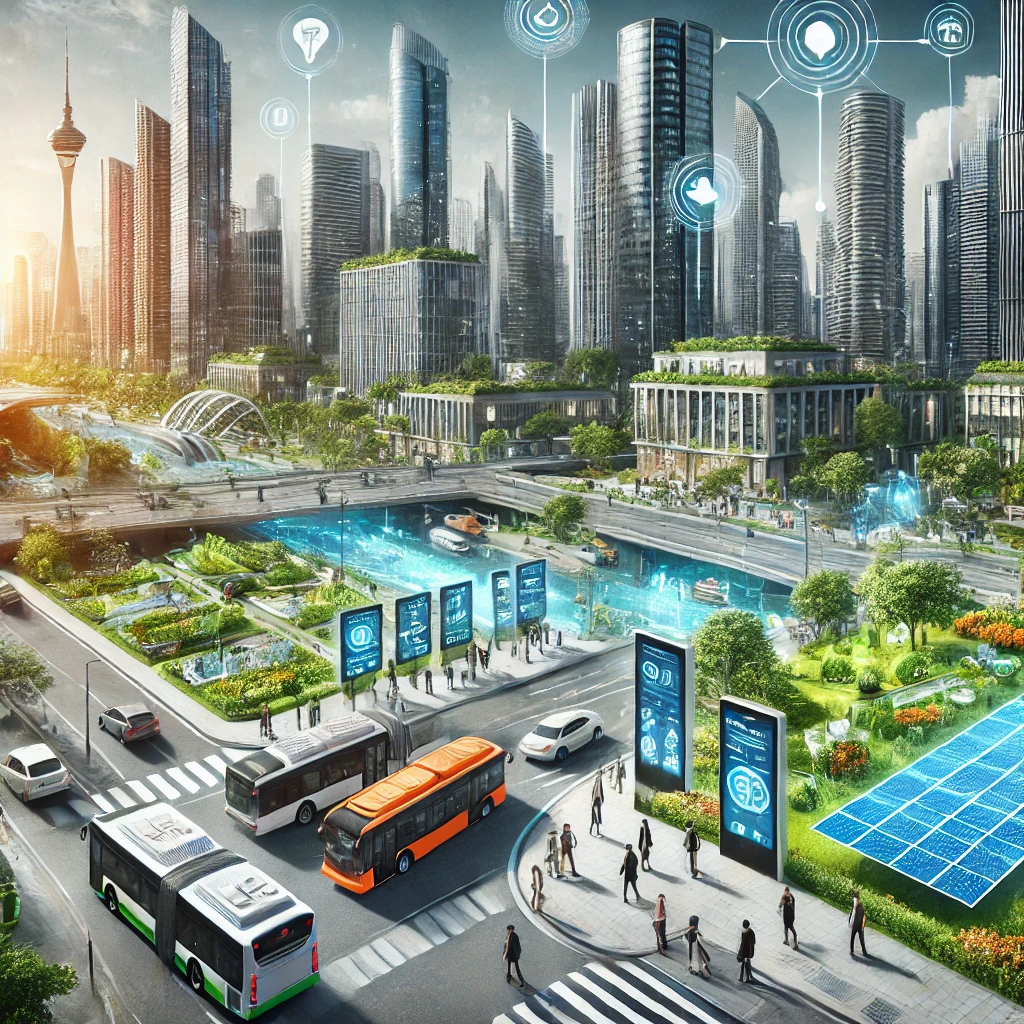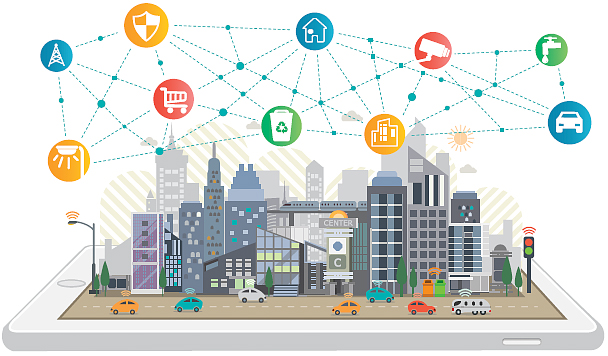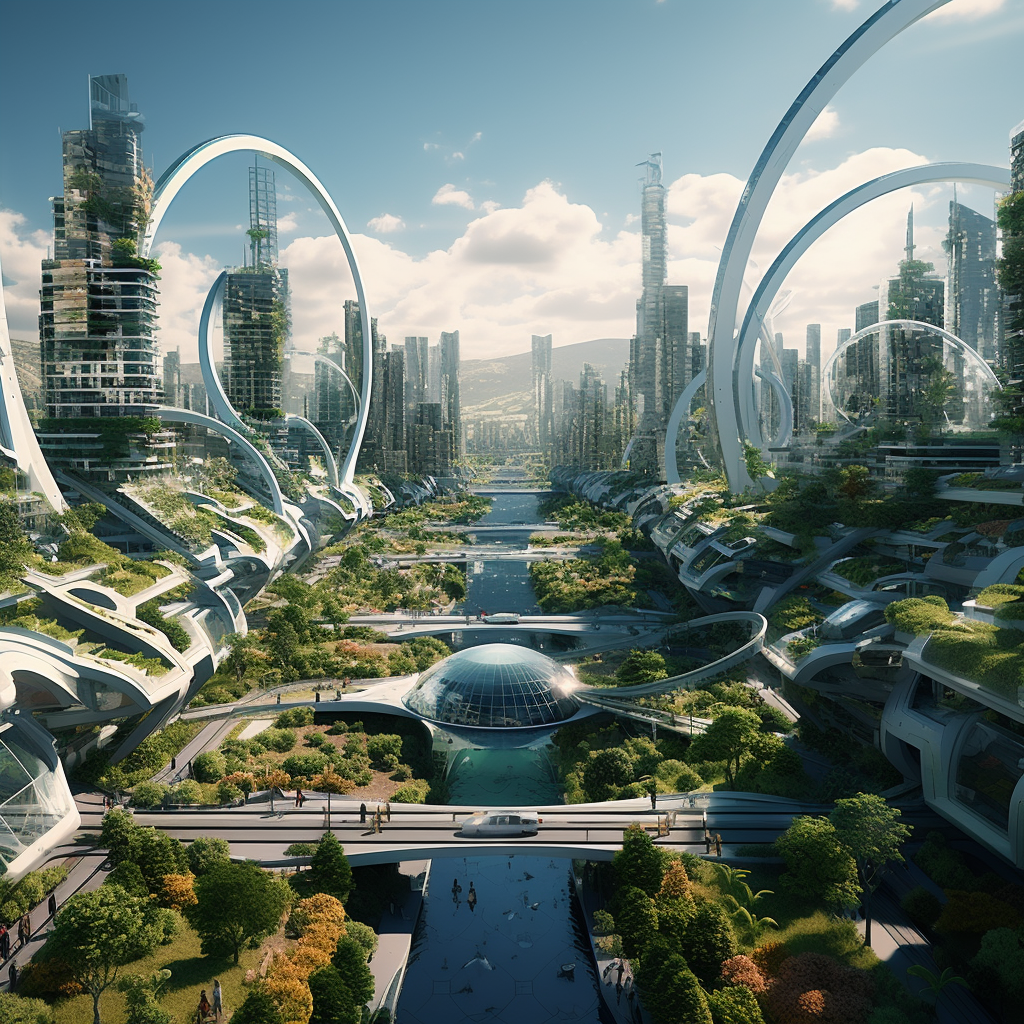What Are Smart Cities?
A smart city integrates technology into urban infrastructure and services to improve efficiency, reduce environmental impact, and enhance the quality of life for its citizens. The foundation of smart cities lies in the use of the Internet of Things (IoT), artificial intelligence (AI), big data, and connectivity to enable real-time monitoring and decision-making. These technologies allow cities to address issues such as energy consumption, traffic management, and public safety while promoting sustainability.
Key Technologies Powering Smart Cities
Smart cities thrive on the seamless integration of cutting-edge technologies, including:
a. Internet of Things (IoT):
IoT devices, such as sensors and smart meters, gather data from city infrastructure. This data is used to monitor air quality, optimize energy usage, and manage waste efficiently. For example, smart waste bins notify collection teams when they’re full, reducing unnecessary trips and saving fuel.
b. Artificial Intelligence (AI):
AI processes the vast amounts of data collected by IoT devices, providing actionable insights. AI-powered systems predict traffic patterns, enhance emergency response, and improve urban planning.
c. 5G Connectivity:
5G networks enable ultra-fast communication between devices, supporting real-time applications like autonomous vehicles, remote healthcare, and smart traffic systems.
d. Big Data and Analytics:
Smart cities rely on big data to analyze trends and make data-driven decisions. For instance, analyzing traffic data can help optimize public transportation routes.
e. Renewable Energy Technology:
Smart cities integrate renewable energy sources like solar panels and wind turbines with energy storage systems to ensure sustainable energy supply.
3. Smart City Innovations Transforming Urban Life
a. Smart Transportation Systems
Transportation is a major concern for urban areas, but smart cities are reimagining mobility:
- Smart Traffic Management: AI-powered systems optimize traffic lights to reduce congestion. For instance, Singapore’s smart traffic system adapts to real-time traffic conditions.
- Electric and Autonomous Vehicles: Smart cities promote electric vehicle (EV) adoption by building extensive EV charging infrastructure. Autonomous vehicles, powered by AI, promise safer and more efficient urban transport.
- Public Transportation Apps: Apps provide real-time updates on public transit schedules, helping commuters plan their journeys more effectively.
b. Energy Efficiency
Energy sustainability is at the core of smart city development:
- Smart Grids: These advanced energy systems distribute electricity efficiently, monitor usage, and reduce power wastage.
- Energy-Efficient Buildings: Smart cities incorporate smart thermostats, energy-efficient lighting, and green architecture to minimize energy consumption.
- Renewable Integration: Cities like Copenhagen aim to be carbon-neutral by incorporating wind and solar energy into their energy mix.
c. Waste Management and Recycling
Smart waste management systems ensure efficient collection and disposal:
- Smart Bins: Equipped with sensors, these bins notify authorities when they are full.
Recycling Innovations: AI-powered robots sort recyclable materials, reducing landfill waste.

d. Healthcare Advancements
Smart cities leverage technology to enhance healthcare access and quality:
- Telemedicine: 5G enables remote consultations, reducing the burden on hospitals.
- Wearable Health Tech: Devices track vital signs and alert healthcare providers in emergencies.
- Smart Hospitals: Automated systems streamline patient care and manage resources more effectively.
e. Public Safety
Technology enhances urban safety through:
- Smart Surveillance: AI-powered cameras and sensors detect unusual activities and alert authorities.
- Disaster Management: Early warning systems for natural disasters help mitigate risks.
- Smart Streetlights: Equipped with motion sensors, these lights improve visibility and conserve energy.
Citizen Engagement in Smart Cities
A defining feature of smart cities is the active involvement of residents in urban governance. Digital platforms, mobile apps, and social media channels provide citizens with opportunities to voice concerns, report issues, and participate in decision-making. For example, Barcelona’s smart city model allows residents to vote on city projects through an online platform.
5. Benefits of Smart Cities
a. Improved Quality of Life
Smart cities enhance convenience and accessibility for residents. From optimized transportation systems to faster emergency responses, daily life becomes more efficient.
b. Sustainability
Green technologies and renewable energy sources reduce carbon footprints, making cities environmentally friendly.
c. Economic Growth
Smart cities attract investment and create jobs in sectors like technology, energy, and urban planning.
d. Resource Efficiency
By using data-driven insights, smart cities minimize wastage of resources like water, energy, and fuel.
e. Enhanced Safety and Security
AI-powered surveillance and disaster management systems provide safer urban environments.
Challenges of Implementing Smart Cities
a. High Costs
Developing and maintaining smart city infrastructure requires significant investment, often posing financial challenges for governments.
b. Data Privacy Concerns
The collection and use of vast amounts of data raise privacy concerns. Cities must implement robust cybersecurity measures to protect citizens’ information.
c. Digital Divide
Not all residents have equal access to smart technologies, potentially excluding low-income populations from the benefits of smart cities.
d. Dependence on Technology
Over-reliance on technology can make cities vulnerable to cyberattacks or system failures.
e. Governance and Coordination
Building a smart city requires collaboration among multiple stakeholders, including governments, private companies, and citizens, which can be challenging to coordinate.
Examples of Successful Smart Cities
a. Singapore
Renowned for its smart transportation systems, Singapore uses AI to optimize traffic and autonomous vehicles for public transit.
b. Barcelona, Spain
Barcelona has implemented IoT sensors for waste management, smart lighting, and water conservation.
c. Copenhagen, Denmark
A leader in sustainability, Copenhagen integrates renewable energy sources and promotes cycling as a primary mode of transport.
d. Dubai, UAE
Dubai leverages AI, blockchain, and IoT to create a paperless government and smart services for its residents.
e. Amsterdam, Netherlands
The city uses open data to engage citizens and develop innovative urban solutions, including smart grids and shared mobility services.

The Future of Smart Cities
As technology continues to evolve, the possibilities for smart cities are endless. Innovations like 6G connectivity, quantum computing, and advanced AI promise to make urban living even more seamless and sustainable. Future smart cities will likely focus on inclusivity, ensuring that all residents, regardless of income or background, benefit from technological advancements.
Conclusion.
Smart cities are at the forefront of a technological revolution that is reshaping urban living. By addressing challenges like resource scarcity, pollution, and inefficiency, these cities aim to create a more sustainable and livable future. However, for smart cities to reach their full potential, they must overcome obstacles like high costs, data privacy concerns, and the digital divide. With the right balance of innovation, planning, and citizen engagement, smart cities have the potential to transform the way we live, work, and interact in urban environments.


hi
You must be logged in to post a comment.